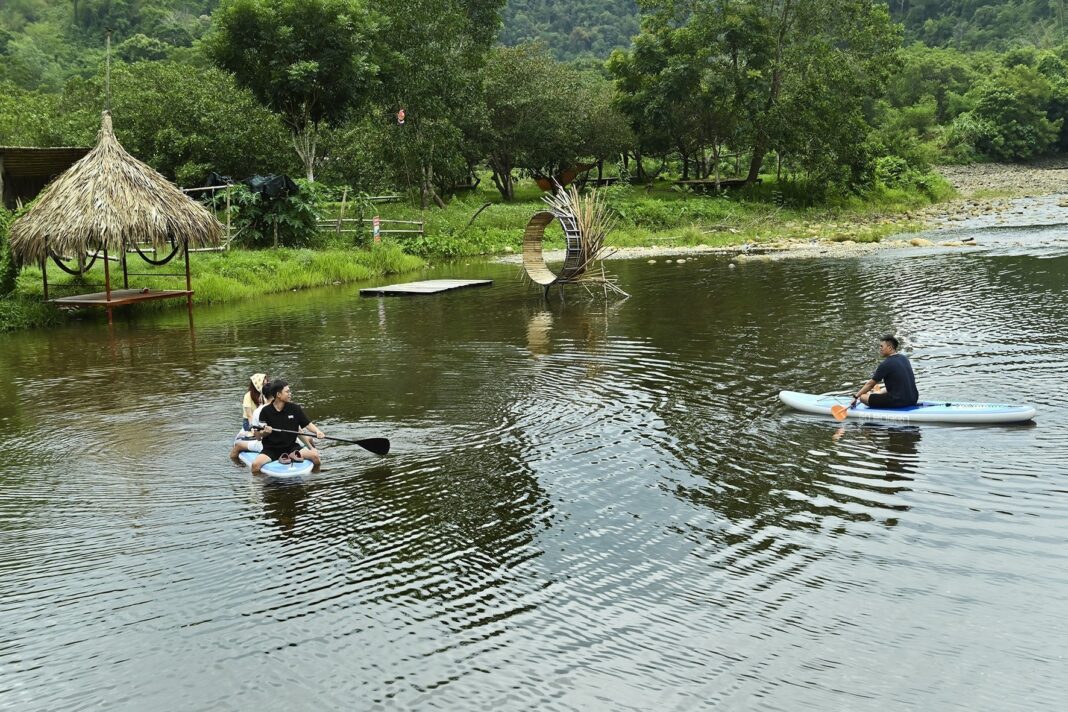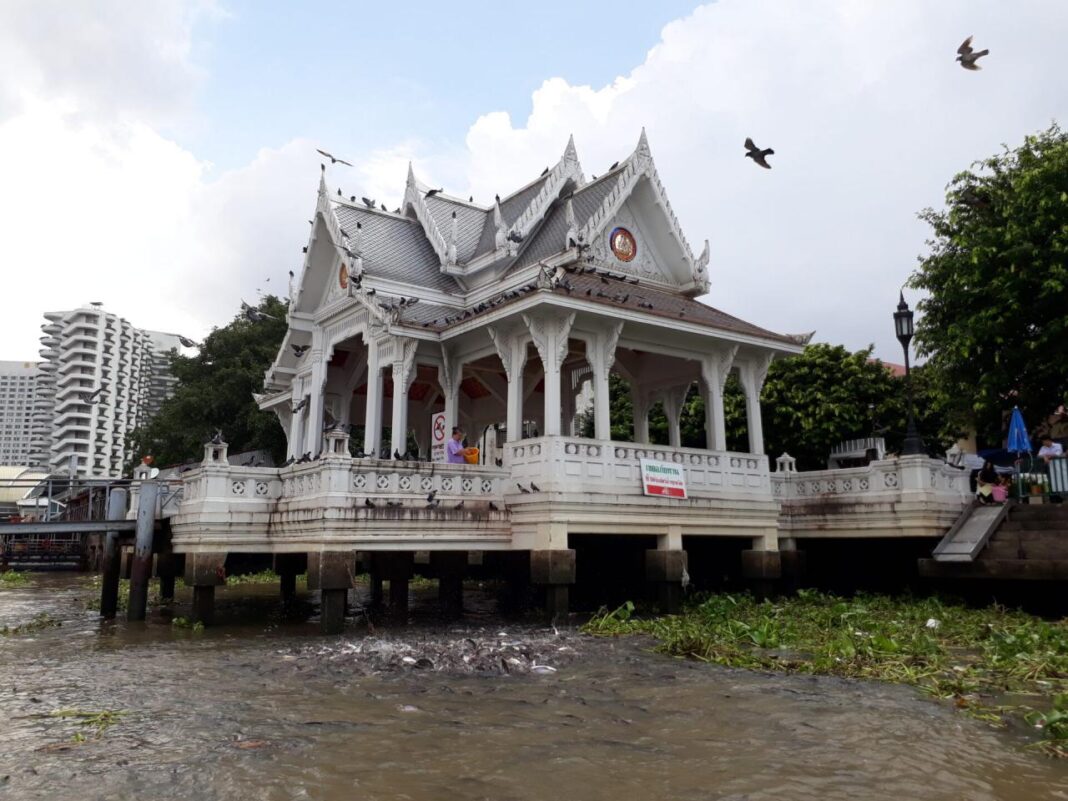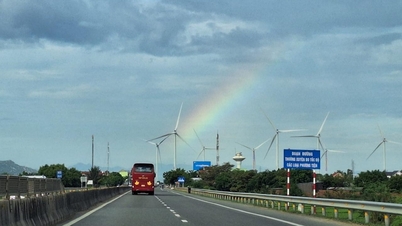In recent years, green tourism is no longer a strange concept but has become an inevitable trend of the "smokeless industry" in many countries around the world . In Vietnam, green tourism is gradually taking shape and developing in many localities. Experts say that in the coming time, green tourism will not only play a huge role in protecting biodiversity and community culture but also contribute positively to sustainable development in Vietnam.

Eco -tourism site in La Ngau commune, Tanh Linh district, Binh Thuan province. Photo: Nguyen Thanh - VNA
According to the International Ecotourism Society (TIES), green tourism is understood as responsible tourism to natural areas, environmental conservation; maintaining the lives of local people. This type of tourism relies on nature, the living environment, limiting negative impacts on the environment such as waste discharge, smoke emission, destruction of flora and fauna, encouraging the use of energy sources, renewable materials, promoting natural cultural heritage, and environmentally friendly products.
According to a survey by TripAdvisor, one of the world’s largest travel websites, 34% of tourists are willing to pay more to stay at environmentally friendly hotels. In addition, 50% of international tourists are willing to pay more for travel agencies that benefit local communities and conservation activities. This shows that green tourism is not only a guarantee for sustainable tourism development, but also a solution to help increase the number of tourists with high spending levels and awareness, civilized behavior when participating in tourism.
In that context, countries/territories around the world have begun to focus on developing green tourism, especially after the COVID-19 outbreak. One typical example is the Maldives - a small island nation located in the Indian Ocean. In recent years, the Maldives has made efforts to replace fossil energy sources with renewable energy sources such as wind and solar power to reduce carbon emissions. Most resorts on the island use seawater filtration systems into fresh water and rainwater collection and collection systems, meeting the demand for fresh water in the tourism industry. Resorts on the island must ensure that they have a wastewater treatment system. Waste is always classified...
In South America, Costa Rica has worked to increase the share of renewable energy in its total electricity supply to nearly 93%. In addition, the country has also put about 30% of its territory into conservation. To date, Costa Rica has developed 8 super green resorts in ecologically diverse areas across the country. Green living is interwoven into the daily activities of visitors such as surfing, diving, sightseeing and hiking in harmony with nature...
In Africa, despite economic difficulties, Kenya still focuses on developing green tourism with many beautiful landscapes and high biodiversity. This East African country has implemented a number of programs that are suitable to its actual socio-cultural and environmental conditions to support and demonstrate its commitment to sustainable tourism development such as the Eco-Assessment Program; Eco-Warrior Awards; Green Destination Guide of the Global Sustainable Tourism Council.
In Asia, Singapore is one of the leading countries in developing green tourism. This island nation creates green by planting trees everywhere. Notably, Singapore's Garden By the Bay has created many "super trees", with heights ranging from 22-50 m, capable of synthesizing solar energy, receiving rainwater, filtering the air and having a photovoltaic system to convert sunlight into electrical energy.
Not only Singapore, two other countries in Southeast Asia, Indonesia and Thailand, also have many policies towards developing green tourism. Specifically, Indonesia has built a green homestay model since 2004, adopted green hotel standards since 2007, ecological standards to improve the professionalism and quality of ecotourism products, and developed national parks and parks in 2011. The Green Bali Island Project was initiated by Indonesia in February 2010 to build Bali into a green, clean, beautiful, welfare, convenient and sustainable destination with three main programs: green economy, green culture and green-clean Bali. In 2016, Indonesia ranked the top 100 green destinations to encourage destinations to develop green tourism.

Thailand is at the forefront of introducing new concepts of green tourism. Illustration photo: Thanh Tung/VNS
Meanwhile, Thailand has taken the lead in introducing many new concepts related to green tourism such as: “Green Heart” - calling on tourists to raise awareness of environmentally and socially responsible tourism; “Green Transport” - encouraging the use of environmentally friendly means of transport for tourism; “Green Destinations” - promoting tourist destinations managed according to responsible and environmentally friendly principles; “Green Communities” - supporting community-based tourism in both urban and rural areas associated with promoting the conservation of the environment, traditions and local lifestyles.
Thus, it can be seen that the trend of developing green tourism is gradually taking shape and taking root in many regions around the world. In a recent report, the World Tourism Organization (UNWTO) emphasized that the COVID-19 pandemic is an opportunity to identify and readjust the direction and method of investment in tourism to better support the implementation of sustainable tourism development goals. UNWTO also noted the need to implement green investment projects, with a better orientation for people, planet and prosperity, so that tourism can bring opportunities to people, thereby enhancing resilience, accelerating action against climate change and improving sustainability for the planet, bringing comprehensive prosperity./.
Mai Huong


![[Photo] Prime Minister Pham Minh Chinh chairs meeting on draft Resolution of National Assembly on International Financial Center in Vietnam](https://vphoto.vietnam.vn/thumb/1200x675/vietnam/resource/IMAGE/2025/5/22/d398664ff1a140629169ea5a24e1b4d0)

![[Photo] General Secretary To Lam chairs a working session with the Central Internal Affairs Commission](https://vphoto.vietnam.vn/thumb/1200x675/vietnam/resource/IMAGE/2025/5/22/3b7790f499da45b2803d8ae253207ef1)

![[Photo] Prime Minister Pham Minh Chinh chairs the Government's special meeting on law-making in May](https://vphoto.vietnam.vn/thumb/1200x675/vietnam/resource/IMAGE/2025/5/22/1c880aae96fd4e0894abc47a46fe19ba)
![[Photo] Press delegation meeting to visit Truong Sa and DK1 Platform](https://vphoto.vietnam.vn/thumb/1200x675/vietnam/resource/IMAGE/2025/5/22/6b8d232877ec421a9e8187d83b9f8006)














































































![[Podcast] Week introducing more than 500 OCOP products in Hanoi](https://vphoto.vietnam.vn/thumb/402x226/vietnam/resource/IMAGE/2025/5/22/d144aac2416744718388dbae3260e7fd)





Comment (0)